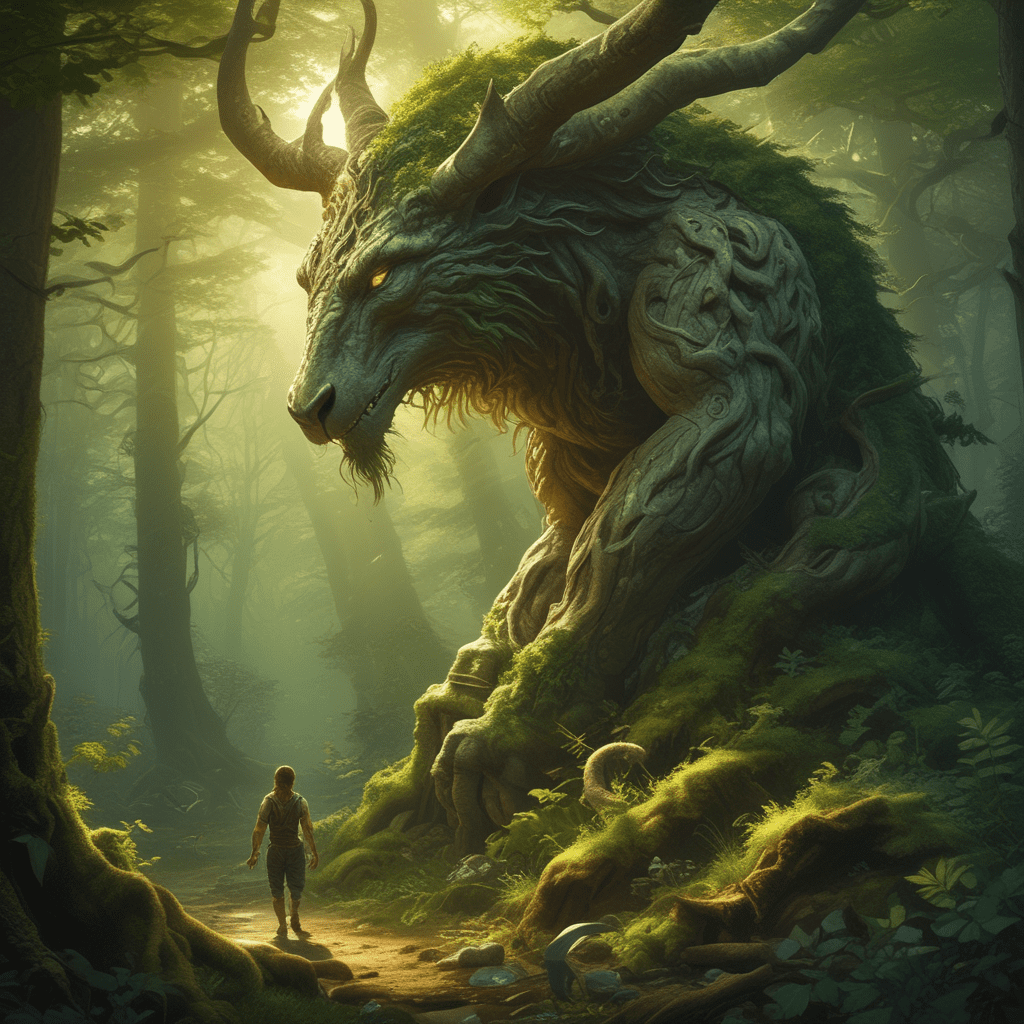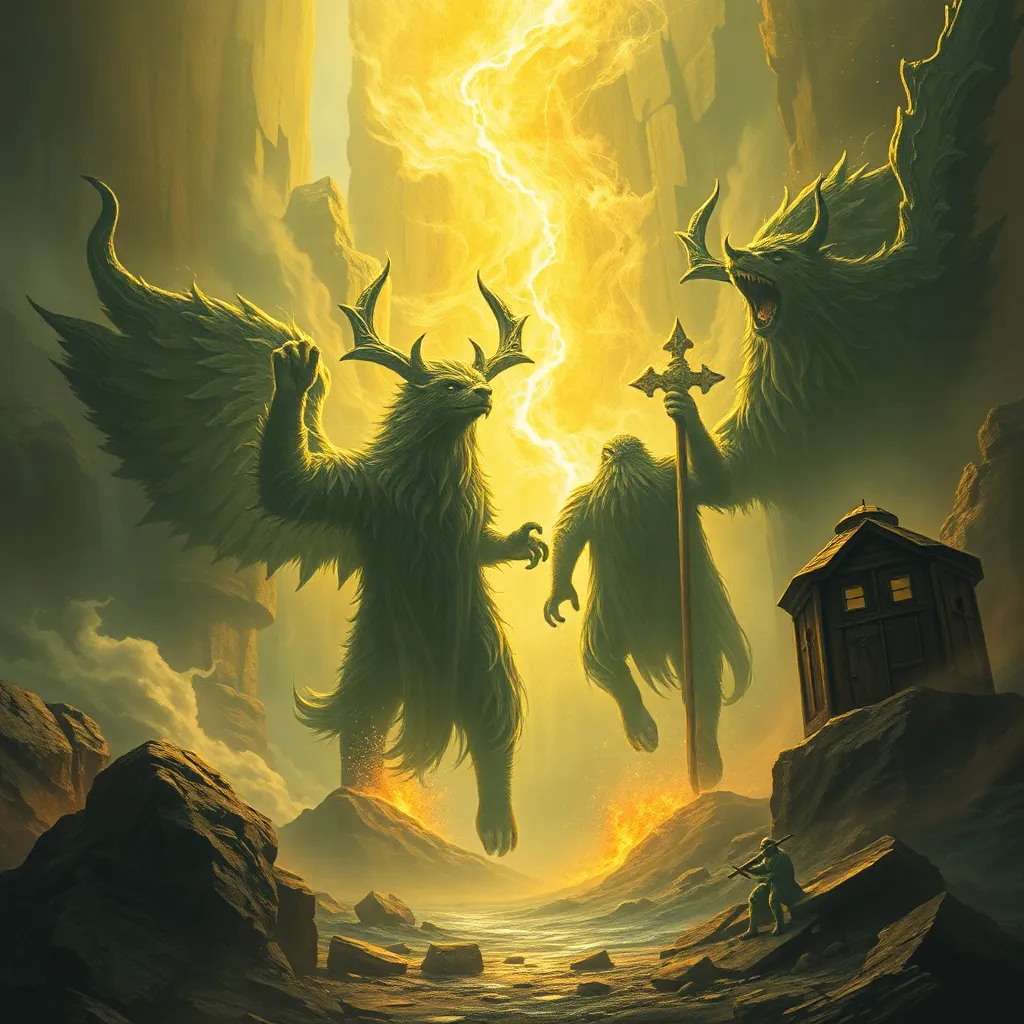The Most Captivating Legends of Ancient Deities and Their Realms
I. Introduction to Ancient Deities
Ancient deities have always played a pivotal role in the cultures that revered them. Defined as supernatural beings with divine powers, these deities were often seen as the creators and maintainers of the universe. They represented various aspects of life, nature, and human experience, embodying both benevolent and malevolent traits.
Mythology serves as a vital lens through which we can understand ancient societies. It provides insight into their values, fears, and aspirations. Through myths, ancient peoples explained the unexplainable, celebrated their heroes, and chronicled their history.
Legends of deities significantly shaped cultural identity and continuity. They provided a narrative framework that connected communities, instilled moral values, and defined the relationship between humans and the divine. These stories have been passed down through generations, reminding us of our shared heritage.
II. The Pantheon of Greek Gods: Olympus and Beyond
Mount Olympus, the mythical home of the Greek gods, stands as a symbol of divine power and authority. It was believed to be a place where gods resided, overseeing the affairs of humanity. The Greeks revered their pantheon, believing that each deity had specific domains and responsibilities.
Key deities of the Greek pantheon include:
- Zeus: The king of the gods, ruler of Mount Olympus, and god of the sky and thunder.
- Hera: The queen of the gods, goddess of marriage and family.
- Poseidon: God of the sea, earthquakes, and horses.
- Athena: Goddess of wisdom, warfare, and crafts.
Legendary tales such as the Trojan War and the Odyssey showcase the complex relationships among these deities and their involvement in human affairs. These myths reveal themes of heroism, betrayal, and the pursuit of glory, reflecting the values of ancient Greek society.
III. Egyptian Deities: The Afterlife and the Underworld
The Egyptian pantheon is rich with gods and goddesses, each representing different aspects of life, death, and the afterlife. The Egyptians held a profound belief in the afterlife, which was intricately tied to their religious practices and myths.
One of the most significant deities was Anubis, the god associated with mummification and the afterlife. Anubis guided souls through the underworld, ensuring they reached the afterlife safely.
The myth of Osiris, the god of the afterlife and resurrection, further emphasizes the importance of rebirth in Egyptian thought. Osiris was killed by his brother Set, but through the love of his wife, Isis, he was resurrected. This myth not only highlights themes of death and rebirth but also underscores the cyclical nature of life.
IV. Norse Mythology: Realms of Ice and Fire
Norse mythology is characterized by its rich tapestry of gods, giants, and legendary creatures, all connected by the cosmic tree Yggdrasil, which links the Nine Realms.
Key figures in Norse mythology include:
- Odin: The Allfather, god of wisdom, war, and death.
- Thor: God of thunder, known for his strength and protection of mankind.
- Loki: The trickster god, known for his cunning and complex nature.
The legend of Ragnarok, the prophesied end of the world, is a central theme in Norse mythology. It foretells a great battle that results in the death of many gods, the destruction of the world, and its subsequent rebirth. This myth reflects the Norse understanding of fate, destruction, and renewal.
V. Hindu Deities: The Complexity of Dharma and Karma
The Hindu pantheon is vast and complex, representing a multitude of divine forms and aspects. Central to Hindu belief is the concept of Brahman, the ultimate reality that underlies all existence.
Key deities in Hinduism include:
- Vishnu: The preserver and protector of the universe.
- Shiva: The destroyer and transformer, representing the cycle of creation and destruction.
- Durga: The fierce goddess who embodies strength and protection.
The epics of the Ramayana and Mahabharata narrate the struggles of gods and mortals, exploring themes of duty (dharma) and the consequences of actions (karma). These stories emphasize the moral complexities of life and the pursuit of righteousness.
VI. Mesopotamian Legends: The Cradle of Civilization
Mesopotamian mythology encompasses the beliefs of the Sumerians, Akkadians, and Babylonians, each contributing to a rich tapestry of deities and legends.
The Epic of Gilgamesh is one of the oldest literary works, exploring themes of friendship, mortality, and the quest for eternal life. Gilgamesh, a king, embarks on a journey to discover the secret of immortality after the death of his friend Enkidu, ultimately learning the importance of accepting human limitations.
Another significant figure is Ishtar, the goddess of love and war, whose duality represents the complexities of human emotions and desires. Her myths often reflect themes of passion, conflict, and the intertwining of love and violence.
VII. Indigenous Mythologies: Nature and Spirituality
Indigenous mythologies around the world often emphasize a deep connection to nature and the spiritual world. These beliefs reflect the relationship between people and the land, with deities and spirits personifying natural elements.
Key deities and spirits in various indigenous cultures include:
- Native American Spirits: Many tribes honor spirits of the land, animals, and ancestors, emphasizing respect for nature.
- Aboriginal Australian Dreamtime Beings: Creation stories often feature ancestral beings who shaped the landscape and its inhabitants.
The legends of creation in these cultures often highlight the importance of nature in spirituality, teaching lessons about balance, respect, and stewardship of the earth.
VIII. South American Pantheons: Gods of the Andes and Amazon
South American indigenous cultures, particularly the Inca and Amazonian tribes, have their own rich pantheons of gods and spirits that reflect the significance of nature and agriculture.
Incan deities were deeply connected to natural elements, such as:
- Inti: The Sun God, worshipped for his life-giving energy and importance in agriculture.
- Pachamama: The Earth Mother, revered for her nurturing qualities and connection to fertility.
Legends of creation often involve the interplay of these gods and the land, emphasizing the importance of harmony between humanity and nature in indigenous beliefs.
IX. The Influence of Ancient Legends on Modern Culture
The influence of ancient deities and their legends continues to resonate in contemporary culture. From literature to art, these myths inspire creativity and exploration of human experiences.
In modern media, ancient mythology has seen a resurgence, with:
- Films and television shows that reinterpret ancient tales for new audiences.
- Books that delve into mythology, blending historical context with imaginative storytelling.
- Artistic expressions that draw on mythical themes, reflecting timeless human struggles and aspirations.
The relevance of ancient legends in modern society underscores the enduring nature of these stories. They remind us of our shared heritage and the universal themes that connect us across time and culture.



